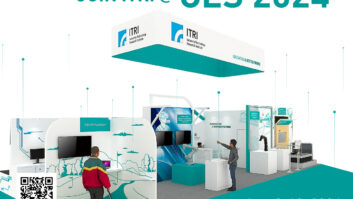
U.S. tech suppliers eyeing the five largest markets in the Asia-Pacific (APAC) region will find big differences in what consumers buy, why they buy, and where they buy, a CTA survey of online consumers found.
The findings, released here at CES Asia in Shanghai, show that Chinese consumers overwhelmingly buy tech products on line, while consumers in Indonesia, Malaysia, the Philippines, and Vietnam overwhelmingly buy in physical stores, said Steve Koenig, CTA’s senior director of market research. China also has the highest proportion of early adopters, higher than even in the U.S., and Chinese consumers spend more on tech and are less price-sensitive than their counterparts in the other four APAC countries, he said.
Chinese consumers cite entertainment as the primary reason to buy tech products, while consumers in Vietnam and Malaysia cite utility and productivity more than any other reason. Philippine consumers cite communication and information.
Although all five countries exhibit a “voracious appetite” for the latest technology, Chinese consumers by far are the first to adopt new technologies, Koenig said. Fifty nine percent of surveyed online Chinese consumers said they are among the first people to buy a new technology when it hits the market or shortly thereafter, he said. The proportion of self-described early adopters in Malaysia and Indonesia is 49 percent each, with Vietnam at 40 percent and the Philippines at 32 percent.
In the U.S., the proportion of early adopters is only 15 percent, Koenig said.
See also: CES Asia Opens To Larger Crowds, Larger Space
CTA also found that Chinese consumers are becoming more discriminating about the brands they want, and not just in tech, Koenig said. Chinese consumers had been satisfied for a time with domestic brands, but they now want “what the rest of the world has,” including Apple and Samsung, he said. “China is frustrated by the lack of access to brands,” Koenig added, and that creates an opportunity for brands from the U.S. and elsewhere to enter the China market.
Suppliers targeting China, however, had better be prepared to sell through online retailers, the survey found. When Chinese consumers were asked where they would make their next tech purchase, 62 percent said online, whether through a computer or smartphone. Indonesia came in second at 38 percent, Malaysia at 33 percent, Vietnam at 29 percent, and Philippines at 24 percent.
China’s heavy use of online stores reflects a nation of consumers who are more experienced with consumer tech and see less need to hold and try out products before they buy, Koenig said.
The top reasons Chinese consumers give for buying their next tech product online include price, convenience, and the ability to learn about a lot of different products, Koenig said. The top reason that consumers in the other APAC countries give for preferring purchases at physical stores is the ability to hold and try out a product.
Consumers in those markets are also more price-sensitive, CTA found. The average amount that Chinese consumers will spend on their next tech purchase is $693 compared with $554 in Malaysia, $501 in Vietnam, $470 in the Philippines, and $396 in Indonesia.
To sell into the major markets outside China, Koenig advises suppliers to offer lower priced products, offer more features for the dollar such as longer battery life, and sell into physical stores.
And in the Philippines, suppliers will be the most successful if they sell portable audio products and HDTVs, the survey shows. The Philippines over indexes in portable audio, including wireless speakers, MP3 players, and headphones, likely because they are very affordable options, Koenig said. Most Philippine consumers are just now upgrading to HDTV, he added.
For its survey, conducted in March and April, CTA surveyed consumers 18 years of age or older.













